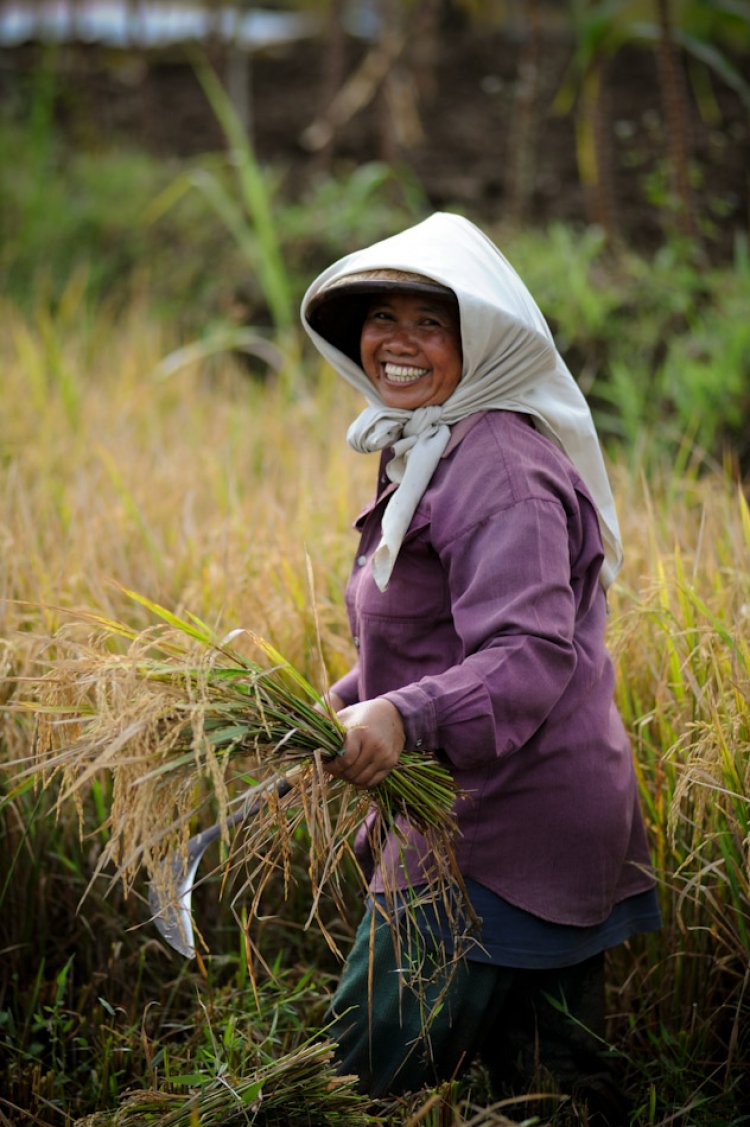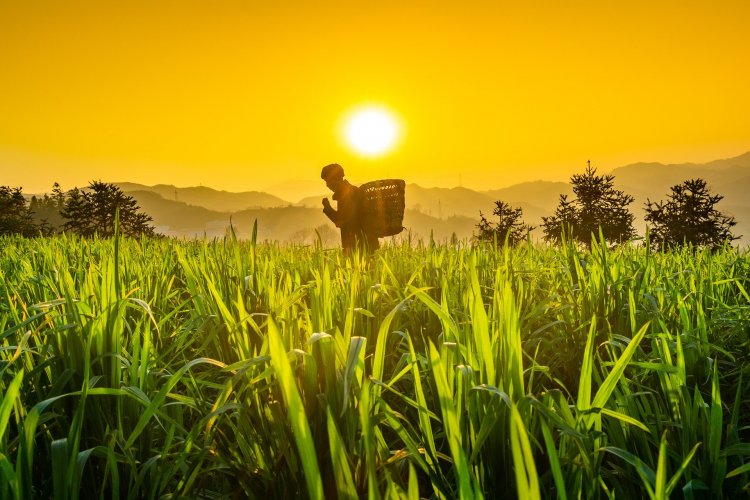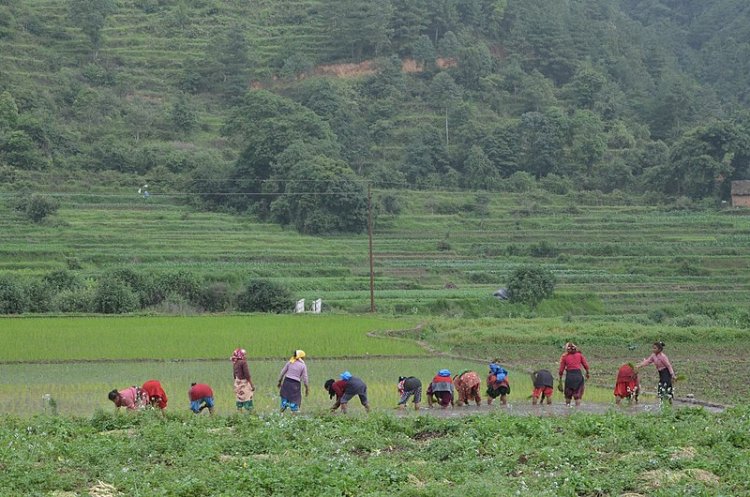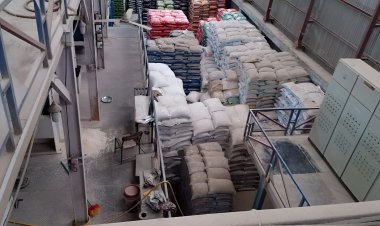Status of Agriculture in Nepal
Agriculture in Nepal
Nepal is an agricultural country where 64c/o of the total population is engaged in it. Our country is highly dependent on it, though agriculture is not capable of giving much to our country. People are highly engaged in it, but it hasn't enhanced the economy of the country so far because people are mostly engaged in subsistence farming. Agriculture plays a significant role in the Nepalese economy. It becomes the principle of economic activity. The contribution of agriculture to the GDP of Nepal was 26.21 in the fiscal year 2019/20 and increased to 19.9% in 2020/21. Since Nepal is a developing country, agriculture is of the utmost importance. Agriculture is the main source of food, income, and employment opportunities for many Nepalese people (especially in rural areas). Most people grow crops for personal consumption rather than selling them in the market, making them reliant on exports.

Characteristics of Nepalese agriculture:
1. Subsistence farming:
2. Traditional farming system:
Some Nepalese farmers still use the old farming technique. They still use the same tools and methods used by their ancestors. Only a few farmers have started to use modern technology to improve farming.
3. Dual ownership of land:
There are many cases of landlord and tenant land ownership in Nepalese agriculture. Although the landlord doesn’t have any effort in production, they will still be the ones who will be in more profit. As a result, tenants are discouraged from producing less and working less.
4. Unequal distribution of land:
The distribution of land is highly biased in Nepal. The number of farmers who have less than 1 hectare of land is very small in Nepal. According to the Nepal, living standards survey 2010/11, 53% of farmers hold less than 1 hectare of land and only 4% of farmers have more than 2 hectares of land for cultivation.
5. Underemployment and disguised unemployment
Since agriculture is seasonable in nature, people are not employed all year round. Marginal productivity of increased labour in agriculture is almost zero. Due to this disguised unemployment exists in Nepalese agriculture.
The contribution of all provinces in agriculture:
Province 1: This province is extremely supported by agriculture and tourism. It covers some fertile terai districts that produce a profusion of food grains. Rice, maize, jute, and sugarcane are major crops in the Terai region, while tea, cardamom, ginger, and citrus grown within the hills and high hills are the main sources of earnings. The important livestock businesses are milk production, piggery, and poultry farming. Farmers of the Terai region also produce fruits like mango, litchi, and banana. For the production of tea, Ilam and Jhapa are the major districts.
Province 2: It lies in the south-eastern region of Nepal and is the smallest province in terms of area. This province lies only in the Thai region and carries the highest potential for agriculture production. The majority of the population is Madheshi, with the highest density among all provinces. It contains the most fertile and suitable land for agriculture and is the most important contributor to the economy through food production and fishing. The region produces various crops such as rice, wheat, maize, sugarcane, jute, and vegetables and is highly commercialized. Likewise, fish farming is also a major source of income for the people of this province. Almost 50 % of total fish production in the country comes from this province. Therefore, this province plays a great role in the country's economy and agriculture.
Province 3: In terms of population, this province is the largest. Almost 90% of the area falls within the hills and high hills. It does not contain the core part of Thailand but has some agricultural lands in Chitwan, Makwanpur, and Sindhuli. This region has a high food deficit not because of small production but of highly populated metropolitans like Kathmandu, Lalitpur, and Bharatpur this region's main sources of income are service, hydroelectricity, the remittance industry, and agriculture. Poultry, dairy, and vegetables are highly commercialized in this region. People are engaged in agriculture for their domestic use and to produce small quantities.
Province 4: This province consists of 10 districts and the eastern part of the former Nawalparasi district. It's also an agriculture-based province. It's estimated that 64% of the population is engaged in agriculture. Tourism and hydropower are the most important economic sectors. The majority of climate styles are offered in this province due to its rich diversity. Except for rice, the province is deficient in fruits and vegetables and relies on self-sufficiency rather than commercialization for cereals. It's highly deficient in onion, garlic, oilseed, and pulses. The people of this province are involved in agriculture, tourism, industry, services, and foreign employment. This province collects the best remittances. The key food crops grown in this province are paddy,maize, millet, and wheat. The cash crops include potatoes, coffee, apples, and oranges.
Province 5 is formed by both the hilly region and plain land of the Terai. The rivers like Karnali, Bheri, Rapti, and Babai provide opportunities for great irrigation in the province. The Sikta irrigation project and the Babai irrigation project have benefited agricultural production. This province is ideal and suitable for agriculture production as the land is very fertile and a good source of irrigation. Paddy, mustard, wheat, maize, sugarcane, vegetables, potatoes, lentils, and cotton are the major crops. The major trade centers are Butwal, Bhairahawa, Nepalgunj, Kohalpur, Tulsipur, Krishnanagar, and Gulariya. It has a great source of agriculture and tourism.
Province 6: It is located in Nepal's western region. This is the biggest province of all in size. The food is highly expensive and dependent. The province is fertile for fruits like apples, oranges, and pomegranates, which are traded all over the country. Maize, barley, wheat, millet, and paddy are the major food crops. This province's cash crops are most likely mustard, soybeans, and hot chili. The special paddy crop known as "Jumli Marsi" is a very popular breed of paddy which is produced in Jumla. Medicinal plants are major products that sustain the economies of many people. Because of the big Karnali River, this province is capable of earning much through hydroelectricity.
Province 7: It lies in the westernmost part of Nepal, which is also the second smallest province. This province lies in the high food insecurity region. There is a high potential for medicinal and valuable crops. The major trade centers of this province are Dhangadhi, Dadeldhura, Mahendranagar, and Dayal. The main crops grown in this province are wheat, mustard, maize, and cotton. People are also engaged in fishing and farming.
What's Your Reaction?









































































































